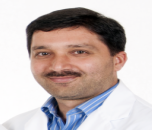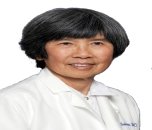Day 2 :
Keynote Forum
Aziz Ghahary
University of British Columbia, Canada
Keynote: A new approach in preventing hypertrophic scarring/keloid
Time : 10:00-10:45

Biography:
Aziz Ghahary, PhD and Professor, is the Director of the BC Professional Firefighters ‘Burn and Wound Healing Research Group and has published more than 168 peer-reviewed articles some of which directly related to autoimmune diseases such as type I diabetes. He has been awarded more than 50 research grants from different local, national and international granting agencies. He is the leading investigator in identifying a serum 14-3-3 eta protein as a biomarker for early detection of RA and psoriatic RA and this test has now been launched by the Quest Diagnosis and Lifelab in US and Canada, respectively. Finally, he recently identified a small molecular with anti-scaring properties, which has now been approved by the Health Canada and the Vancouver General Hospital Ethic Committee to proceed to Phase 1 Clinical Trial.
Abstract:
Wound healing outcome is regulated by a fine balance between deposition and degradation of extracellular matrix (ECM). Over healing formation such as keloid is mediated by exaggerated ECM deposition and abnormalities in ECM degradation. Current treatment modalities for prevention of keloid and hypertrophic scarring have limited efficacy, which raised a great need for innovation within wound care industry. Moving toward novel approaches to prevent these devastating conditions, we identified the anti-scarring properties of Kynurenic acid (KynA), a naturally occurring small molecule generated from tryptophan degradation. To slow down/prevent keloid and hypertrophic scar formation, we have delivered KynA within the wounds before and/or during epithelialization by using either topical application of KynA containing cream or KynA slow releasing dressing. The results showed a significant outcome improvement in a fibrotic rabbit ear model received this therapeutic agent. During the course of this talk, the challenges associated with dermal fibrosis will be presented, the reason for choosing KynA as a potent anti fibrogenic factor will be discussed, in vitro data on efficacy of KynA as an ECM modulating factor in favor of improving the wound healing outcome will be presented, the benefit of using KynA in a topical cream and slow releasing dressing on a fibrotic rabbit ear model will be shown, finally the safety result of KynA cream in a phase 1 clinical trial will be presented. At the end, the conclusion and the future direction of using KynA as a potent anti-fibrogenic factor for treatment of keloid and hypertrophic scarring will be presented.
- Skin and Infectious Diseases | Dermatologic Surgery | Therapies for Skin Disorders | Genodermatosis | Diagnostic and Clinical Analysis | Dermatological Diseases
Location: Fraser North

Chair
Madalene C Y Heng
David Geffen School of Medicine at UCLA, USA

Co-Chair
Pieter Spee
FibroTx LLC, Estonia
Session Introduction
R B Jalili
University of British Columbia, Vancouver, BC, Canada
Title: Application of Adipose Derived Progenitor Cells for Treatment of Chronic Wounds

Biography:
Dr. Jalili is an Assistant Professor in the Department of Surgery at the University of British Columbia. He is a Principal Investigator at ICORD. Dr. Jalili attended the Tehran University of Medical Sciences for his M.D. and the University of British Columbia for his Ph.D. in Experimental Medicine.
Abstract:
Introduction: Chronic wounds such as diabetic foot ulcers usually fail to progress through the normal wound healing process. Despite widespread effort, current conventional prevention and treatment methods have neither decreased prevalence of these ulcers nor significantly improved their outcomes. This speaks to the need for development of innovative and clinically translatable strategies for treatment of chronic wounds. Stem cell therapy has been examined as a therapeutic approach to chronic wounds throughout the past decade. The use of Adipose derived cells (ADCs) in treatment of chronic wounds has been both promising and practical treatment because of its relatively non-invasive extraction, high proliferation rate, and ability to differentiate into several mesodermal lineages. It has been shown that wounds treated with ADCs applied in the combination of a three-dimensional scaffold exhibit the greatest wound healing outcome.
Methods: In this study, we developed a novel bio-hybrid system comprising an injectable biocompatible crosslinked matrix that is populated with adipose derived cells to form a scaffold within the wound bed. Layers of a nano-woven biopolymer mesh were then served to enhance graft toughness and restore tissue homeostasis ultimately improving the rate of healing of a chronic wound. We compared the viability of adipose derived cells in vitro in combination with and without this bioengineered in-situ forming skin substitute and then applied it in treatment of full-thickness wounds in a pilot murine chronic wound model.
Results: Adipose derived cells (ADCs) exhibited greater viability and functional characteristics when cultured with the bioengineered skin substitute than those cultured alone. Gross wound measurements of the wound treated with combination of ADCs and bioengineered skin substitute exhibited significantly improved wound healing than untreated wounds or those that were treated with ASCs alone. Future research is warranted to examine the promising use of ADCs as treatment for chronic wounds.
Conclusion: Our bottom-up approach will integrate fundamental aspects of biomaterials design with cellular and molecular medicine to innovate an affordable and employable, novel system for the treatment of chronic wounds.

Biography:
Devashri Mukherjee has completed her Master’s in Public Health from the reputed Christian Medical College of Vellore in India. She is a Dental Surgeon by training and is presently working as an Associate Epidemiologist at the Bangalore office of Decision Resources Group India. She holds 10 international publications to her credit.
Abstract:
At Decision Resources Group, we specialize in forecasting trends in the global burden of diseases bolstered by extensive and comprehensive literature review. Atopic dermatitis, an inflammatory disease characterized by intense itching and eczematous lesions has become a common health problem affecting about 20% of children and 3% of adults worldwide. We base our report on the internationally accepted ISAAC Phase III results to which we retrofitted curves looking at historical data and developed a robust model to generate age and gender wise prevalence estimates for all ages. This model accounted for spontaneous remission as well as the birth cohort effect, which is the observed higher disease risk in children than adults. The ISAAC study results capture a uniform disease definition across all countries in our global estimates and allow for defensible and comparable rates of 12-month prevalence, lifetime prevalence and drug treatable population which we present across the North and South American, European, Asia Pacific, Middle East and African regions. We provide a snapshot of the worldwide prevalence indicating a worrisome rise in the low income countries but almost plateauing in the high income countries. Our report highlights the variation amongst the population eligible for drug treatment between high and low income countries. We also report the distribution of the disease based on its severity and atopic association. Combined with our ten year forecast, our results facilitate identification of countries at risk and enablement of opportunities for affordable promising therapies in those vulnerable countries.
Madalene C Y Heng
Professor of Medicine/Dermatology UCLA School of Medicine USA
Title: Phosphorylase kinase inhibition and removal of aggravating factors in the induction of long term remissions in psoriasis

Biography:
Madalene C Y Heng is a Clinical Professor of Medicine, Dermatology at the David Geffen UCLA School of Medicine. From 1979 to 2003, she was a Chief of Division of Dermatology, UCLA San Fernando Valley Medicine Program. She is currently in private practice in Heng Medical at Camarillo, CA and is a Reviewer for the Journal of the American Academy of Dermatology, American Journal of Geriatric Medicine, British Journal of Dermatology, Lancet, London, and International Journal of Angiology. She is the author of more than 140 scientific publications, including 78 published peer-reviewed articles on topics such as phosphorylase kinase activity and psoriasis, pathophysiology of common skin diseases, and wound healing.
Abstract:
Phosphorylase kinase (PhK) is a cyclic AMP-dependent dual specificity kinase capable of breaking down glycogen and phosphorylating both serine/threonine and tyrosine moieties in the activation of the transcription activator, NF-kB, which in turn is responsible for activating multiple genes responsible for inflammation and cell proliferation. Elevated PhK levels have been observed to correlate with increased phosphorylation and psoriatic activity, while suppression of PhK activity leads to resolution of psoriasis. Genes for psoriatic familial susceptibility have been mapped to 17q and psoriasis susceptibility loci to both 16q and 17q, apparently correlating with genes for the β-subunit of PhK (mapped to 16q) and the regulatory subunit for cAMP protein kinase (mapped to chromosome 17). These genetic findings provide some credence that defective inhibition of PhK activity may be responsible for its elevated activity in psoriasis. PhK is released within 5 minutes following injurious stimuli, including trauma, contact allergens and infections, which serve as aggravating factors in psoriasis. We have developed a protocol, consisting of inhibition of PhK by its selective inhibitor, curcumin, together with removal of aggravating factors to achieve not only total clearance of psoriasis, but also to produce long term remissions without the need for maintenance therapy. In this presentation, we include details of this combination therapy and identification of aggravating factors in our psoriatic patients.
